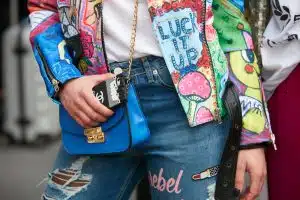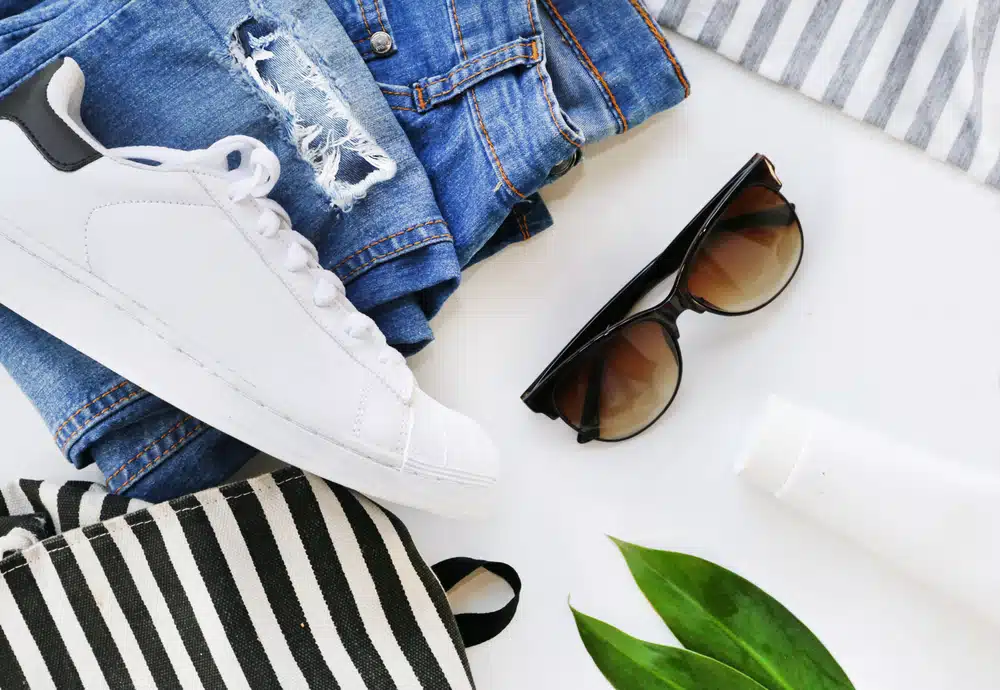
The fashion industry has been lagging behind in supplying ethically sourced products to consumers. You can succeed as an entrepreneur if you follow these tips.
The cost of starting a fashion line doesn’t need to be high: you can get started with less than £5000. Your goal should be to stand out from the crowd.
What’s the reason? There is no shortage of options on the fashion market, many of which are similar both in terms of ‘look’ and price.
Sustainable clothing is one of the key areas of growth in the fashion industry for a variety of reasons, including environmental awareness and a desire for more individual, less mass-produced clothing.
In the past, lentils were used to weave kaftans. We’re referring to clothing that is produced with as little environmental impact as possible – whether through the sourcing of materials, manufacturing methods, distribution methods, or the treatment of employees.
This section outlines current trends, along with inspirational case studies that illustrate the opportunities for success in this niche market specialty.
Top five sustainable shopping trends for 2024
- Reusable packaging
It’s not just about what you can recycle, but also about creating ways to promote brand awareness – packaging that can be repurposed is a winner in the eyes of the ethical shopper – for example, packaging a dress in a drawstring bag made from off-cut fabric, which can then be used as a laundry bag on vacation.
- The rise of resale
Apps like Depop demonstrate the popularity of second-hand clothing. Global fashion resale market growth is forecast to reach 127% by 2026, according to a Thredup report.
- Less is more
Consumers are becoming more aware that fast fashion is ultimately a false economy, as said by the late Vivienne Westwood.
- Recycling
Big names such as H&M and M&S are promoting recycling – it’s not just individual sellers and thrift stores driving the trend.
- The rental market
How many dresses have you purchased for special occasions, only to have them languish in your wardrobe afterward? Renting an outfit is a way to save money by paying a fraction of what it would have cost to buy it new – and then returning it to the renter. Your closet will be less cluttered and less expensive.
Is there money to be made in sustainable fashion?
As the above statistics demonstrate, the sustainable fashion market offers opportunities for entrepreneurs. What is the best way to launch a successful clothing line?
There is currently a $6.95 billion market for sustainable fashion, according to recent industry figures.
By 2025, that figure will rise to $10.281 billion. The time is ripe for creating a sustainable clothing brand if you’re interested in starting one.
Sustainable clothing’s increasing value – and potential – can be seen in the following statistics:
- 43% of Gen-Zers say they actively seek out companies with a good reputation for sustainability, according to McKinsey’s State of Fashion 2022 report.
- In a report by Drapers from 2022, 77% of shoppers said they always or sometimes consider sustainability when shopping for fashion.
- According to Simply Business insurance provider, online searches for ‘second-hand clothing’ have increased by 50% year-on-year between June 2021 and June 2022.
- The primary motivation for buying preowned clothes was reducing consumption, according to 75% of Gen Z respondents.
- As of 2022, Boohoo and ASOS’s shares were down 74% on average.
- Around 66% of respondents take sustainability into account when purchasing a luxury product, according to research from The Business Research Company.
- It is not just the product itself that matters. According to the Fashion Transparency Index 2022, almost half of the UK’s major fashion brands published targets on sustainable materials.
Elvis & Kresse, a Kent-based company that makes belts, bags and other accessories from decommissioned firehoses, is one of the companies experiencing success. Averaging over ten thousand products annually, they donate 50% of their profits to the Firefighters Charity.
Since 2005, they have started with just £8,000 and a single belt design. All of their products are packaged in repurposed materials, and they use renewable energy.
People Tree is another pioneer in this field, founded in 1991 with the mission of creating clothing that is ethical and environmentally friendly, from design to production. World Fair Trade Organisation product label was awarded to it for the first time – and it has a turnover ranging from £2 to £10 million.
Do you need a physical store?
A business can reach a larger audience and lower overheads by operating online instead of renting premises.
You can also promote and sell your products online by including links that explain the philosophy behind your company’s brand, the provenance of the materials, and the company’s mission.
The founders can also be ‘get to know’: when customers spend more money on garments that they trust to be sustainable, durable, and all-round quality, this personal touch may be particularly important – because trust is a crucial factor when influencing consumer habits.
Benefits of a physical store in 2024
A bricks and mortar store can still be beneficial to your sustainable fashion brand even though e-commerce sales have grown exponentially since 2010 – nearly 800%.
One of the biggest criticisms of ecommerce businesses is their over-packaging. An abundance of single-use plastic might be another problem, as are boxes that are much larger than their contents require.
When sustainability is at the centre of a buyer’s decision, recycled, recyclable, and biodegradable materials are definitely more appealing.
Moreover, sustainable fashion may not be completely understood by some people since it is still very new – and generally more expensive than conventional fashion, as we have mentioned above.
Testing products can be a big plus if they can be touched, felt, worn, and tested. In addition to removing doubts about size, fit, and colour, experiencing a product in real life can help close a sale. The result? Returns will be lower, and administration will be less – a cost in itself.
Five sustainable fashion start-ups to watch
Stand4Socks
A Manchester-based company, Stand4Socks, donates one pair of specially engineered socks to a homeless shelter for every pair sold. In addition to selling sustainable socks, they also deliver them in 100% compostable mailers made of bamboo – a more sustainable fabric than some other options.
In recognition of the different challenges homeless people face, the socks donated to homeless shelters are made from thick, durable antibacterial material with reinforced seams. More than 263,000 pairs of socks have been donated by Stand4Socks since its inception in 2015.
TALA
The sustainability of activewear has been embraced by several brands. Its products combine pre- and post-consumer materials to create durable, flattering products. TALA was founded in 2019.
Besides bamboo and recycled cotton, other fabrics include Lyocell, made from wood pulp. Factory tags are filled with seeds, making them fully plantable, and they only work with factories with ethical accreditation. In addition, all the company’s packaging and courier bags are made from 100% recyclable plastic.
Hurr Collective
Forbes magazine has called Hurr Collective ‘the Airbnb of fashion’ since its founding in 2018. Lenders can earn money by renting out wardrobe items that are underutilised. The renters, on the other hand, can borrow designer items for about 20% off their normal retail price. Ecologi, which calculates their carbon footprint and provides the opportunity to offset through donations to CO2 reduction projects, keeps track of their climate positivity.
What on Earth
The What on Earth collection of fashion labels was founded in 2020. In addition to working with designers who use recycled and upcycled fabrics, they also work with brands that provide full transparency about their supply chain and business operations. Essentially, their business model is based on how clothing is designed and manufactured, what materials are used, how the workers are treated, and how the products are shipped.
Lucy & Yak
In 2017, Lucy & Yak released their first run of dungarees in India, which sold out almost immediately. As soon as they returned to the UK, they launched a brand devoted to circular fashion, with products that are recycled, organic, closed-loop, and packaged sustainably. Their suppliers pay fair living wages in accordance with the Global Living Wage Coalition, and they work with and donate to organisations that support people and the environment.
Key considerations when launching a sustainable fashion brand
Sustainability at the core of many fashion labels has become a household name, as we’ve seen.
Obviously, no business is guaranteed to flourish or fail, but here are a few tips to help you succeed:
- Define your intentions, as well as the nature of your product, and budget accordingly
The production of ethical clothing often takes place in smaller batches, which adds to the production costs. In addition, fast-fashion brands compete with cheaper prices.
You’ll have to commit time to hunting down charity shops and boot sales if you intend to start a business reselling items you’ve bought, and you’ll need some knowledge of what you buy and how much to charge for it.
A Chanel handbag for a fiver is unlikely to be found in charity shops that are aware of labels and their value. You must make substantial mark-ups when you re-sell an item, even if you pay less than what you might expect to pay at a charity shop.
- If setting up an online store, search for the platform with the lowest seller fees
Due to the closures of physical stores and reliance on online retail, the pandemic has also contributed to the sustainability trend: marketplaces like Etsy, which claim to support small-scale artisans and makers, reported in 2021 that more than $10 billion in goods were purchased there.
Nonetheless, platforms such as Etsy, where people purchase recycled, upcycled, vintage or handcrafted items, charge fees that can cut into the seller’s profitability. This is particularly true when you consider the time spent photographing and describing the item.
- Market your brand using social media platforms, collaborations, competitions and – depending on budget – PR.
The importance of social media in the building of any brand cannot be overstated. However, you shouldn’t only use Instagram to showcase your finished product. You can sell items on Instagram. To get your customers to buy into both the story and the item, tell your brand story, not your product line.
Upcycling or recycling is brought to life for followers by documenting the process. While still in the design phase, you can even take pre-orders.
- Make your credentials as much a part of your brand’s appeal and marketability as your products
Customers today are looking for more than just sustainable practices. If you pledge to be carbon neutral by 2028, you need to go the extra mile, whether you donate a portion of your business profits to a relevant charity.
Ensure that your business has all the relevant credentials, too – whether Bluesign, BCorp, Fair Wear – and avoid greenwashing.
Make sure your company and its strategies are positioned in a way that appeals to your customers. According to your audience’s research, carbon-neutrality may be a top concern. Your messaging strategy can then be refined based on certain pillars.
To summarise
Sustainable fashion trends have gained increasing attention in recent years as consumers and fashion industry stakeholders recognize the need for more environmentally and socially responsible clothing choices. One prominent trend is the rise of eco-friendly and organic fabrics, such as organic cotton, hemp, and recycled materials. These materials are grown or manufactured with minimal use of harmful chemicals, pesticides, and water, reducing the environmental impact of fashion production.
Another trend is the push for transparency and traceability in supply chains, where consumers are demanding to know where their clothes are made and the conditions under which they are produced. This has led to the growth of fair trade and ethical fashion, which prioritize fair wages, safe working conditions, and human rights for garment workers.
Additionally, the concept of circular fashion is gaining momentum, which promotes the reuse, recycling, and upcycling of clothing to reduce waste and extend the lifespan of garments.
Finally, there is an increasing awareness of the social impact of fashion, including issues such as body positivity, inclusivity, and diversity, which are influencing the design and representation of clothing to be more inclusive and representative of diverse cultures and identities. These sustainable fashion trends reflect a growing desire among consumers and the fashion industry to prioritise environmental sustainability, social responsibility, and ethical practices in the way we produce, consume, and engage with fashion.
Lee Jones is a seasoned Business Finance Specialist with over two decades of invaluable experience in the financial sector. With a keen eye for market trends and a passion for helping businesses thrive, Lee has become a trusted advisor to countless organizations seeking to navigate the complexities of finance.


